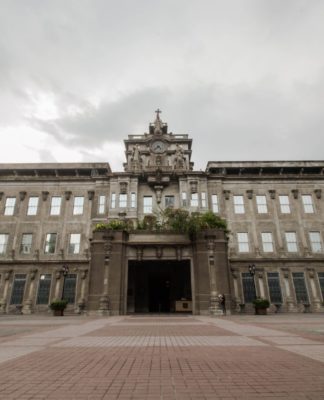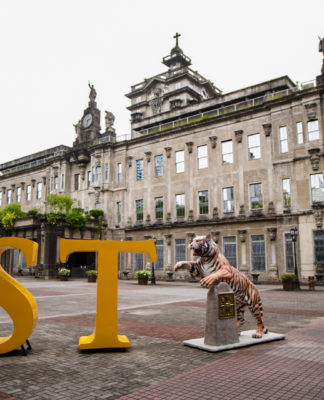LOCATED within the historic walls of Intramuros, the San Agustin Church is picturesque with its red-bricked glory. One of the few surviving Baroque buildings in the country, the old stone structure comes to life with two new exhibits, Transformation through Religious Experience and Sailors, Monks, and Church Builders.
Portraits of Augustinian friars Andres Urdaneta, Martin de Rada, Diego de Herrera, Andres Aguirre, and Pedro Gamboa, who came to the Philippines with Miguel Lopez de Legaspi in 1565, greet the visitors from the soaring walls of the sala recibidor. Following the fence guides through the exhibit, a Santo Niño icon in tawny wood, said to be one of the first in the country, stands two feet tall. The image was originally set on a golden pedestal studded with pearls.
The exhibit also elaborates on the arrival of religious orders in the country—from the Augustinians in 1565 to the Franciscans in 1578, to the Jesuits in 1581, the Dominican fathers in 1587, and the Recollects in 1606. Also on display are Church vestments during the great missionary era in the common white, green, red, and gold worn by the Augustinians from China and Spain.
Both indigenous and colonial traditions of the Filipinos are highlighted, including a statue of the bulol, the ancient rice granary guardian, to whom ancient highland Filipinos prayed for prosperous harvests.
Cebuano, Ilocano, Kapampangan, and even Chinese antique grammar dictionaries, proofs of early Spanish-Filipino inculturation, are also on display.
Several historic periodicals are on loan from the University’s Archives. Copies of La Solidaridad, the publication of the Filipino Propaganda movement in Spain in the 19th Century, are on display. The copies carry the bylines Dr. Jose Rizal, Marcelo H. Del Pilar, and Graciano Lopez Jaena, all illustrious alumni of the University.
Toward the end of the exhibit are ecclesiastical paraphernalia—an intricately detailed golden monstranz, a lectern, a wooden tabernacle, and an ancient Bible with painted figures on its cover.
Meanwhile, colorful tarpaulin posters, making up most of the displays, detail the many duties of the Augustinians in the Philippines.
While the first exhibit is full of actual artifacts, the second exhibit is an information overload. Divided into subsections of various regions like Tarlac, Manila, Bulacan, Batangas, Iloilo, and Ilocos Norte, the posters give a comprehensive list of the history of Augustinian churches, monasteries, and schools all over the country.
Paintings of these structures are also added for visuals, but many of them did not survive the Second World War, old age, and neglect.
Designed by soldier architect Juan Macias in 1587, the San Agustin Church was completed in 1606. The church’s domed ceiling was painted by Italian artists Alberoni and Dibella. In its crypt is the tomb of conquistador Miguel Lopez de Legaspi. The museum contains 16th century church artifacts such as chandeliers, pulpits, and tombstones.
The San Agustin Church and Museum is a significant Spanish cultural landmark, as well as a monument to the evangelization of the Philippines. Florian C. Garcia















